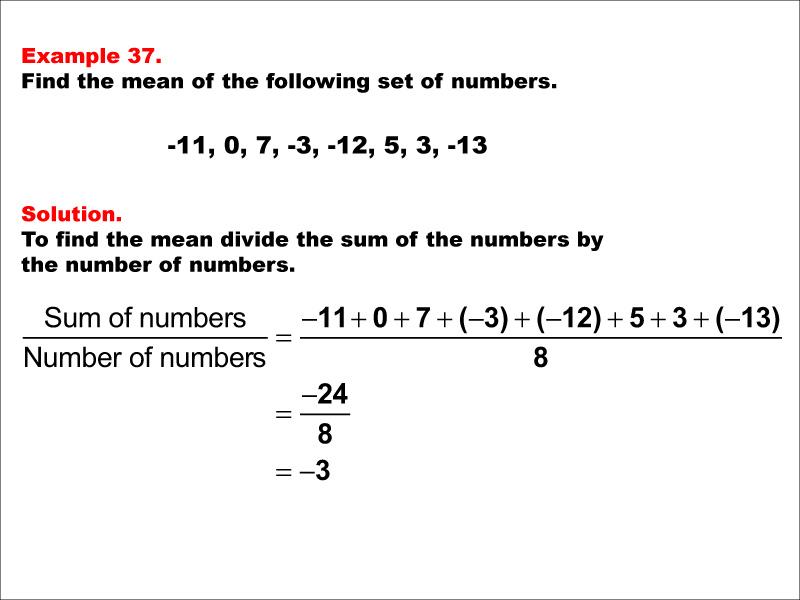
Display Title
Math Example--Measures of Central Tendency--Mean: Example 37
Display Title
Math Example--Measures of Central Tendency--Mean: Example 37

Topic
Measures of Central Tendency
Description
This example illustrates the calculation of the mean for a new set of numbers. The process involves summing all values and dividing by the count of numbers. This example is particularly instructive as it continues to reinforce the concept of finding a central value that represents the entire dataset, potentially dealing with a different range or distribution of numbers than previous examples.
Understanding measures of central tendency, especially the mean, is fundamental in statistics and data analysis. These measures allow us to condense large datasets into single, representative values, facilitating comparisons and providing insights. Mastering these concepts equips students with the tools to interpret data effectively and make informed decisions across various academic and real-world contexts.
Providing multiple examples is crucial for deepening students' understanding of the mean. Each new example reinforces the calculation process while introducing slight variations in the data, helping students recognize that the concept applies universally, regardless of the specific numbers involved. This approach builds confidence and prepares students to apply the concept flexibly in various real-world contexts, from analyzing financial data to interpreting scientific measurements.
Teacher Script: "Let's explore our thirty-seventh example of calculating the mean. As we work through this, think about how this dataset might differ from previous ones we've seen. Does the final mean surprise you? Remember, the mean gives us a 'typical' value for our dataset, but it might not match any single data point exactly. This example shows how the mean can provide valuable information about the overall trend of our data, even when it includes numbers that vary widely. It's a great illustration of how the mean can represent a dataset that might include both small and large values, or perhaps a mix of positive and negative numbers."
For a complete collection of math examples related to Measures of Central Tendency click on this link: Math Examples: Measures of Central Tendency: Mean Collection.
| Common Core Standards | CCSS.MATH.CONTENT.6.SP.B.4, CCSS.MATH.CONTENT.6.SP.A.3, CCSS.MATH.CONTENT.HSS.ID.A.2, CCSS.MATH.CONTENT.HSS.ID.A.3 |
|---|---|
| Grade Range | 6 - 12 |
| Curriculum Nodes |
Algebra • Probability and Data Analysis • Data Analysis |
| Copyright Year | 2014 |
| Keywords | data analysis, tutorials, measures of central tendency, mean, average |